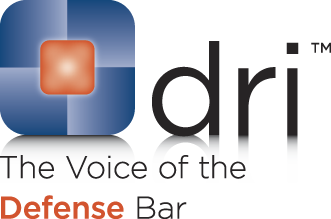In a previous blog post HERE, we discussed the case of Alamo Rent-A-Car v. State Farm. The Alamo decision concluded that as between the personal liability coverage of the driver and the statutorily created rental car coverage or self-insurance of NRS 482.305(1), the personal liability coverage of the driver is primary. Unanswered in the Alamo opinion was what would happen if the claimant’s damages were to exceed the policy limit of the driver’s personal policy. That issue was addressed in Salas v. Allstate Rent-A-Car. See our post HERE. The Salas court described a “dual coverage” system where the statutorily mandated rental car coverage or self-insurance was stacked above any personal liability policy and would pay its minimum limits if that primary policy was exhausted.
In Hall v. Enterprise Leasing Co. 122 Nev. 685 137 P.3d 1104 (2006), just like in the prior cases, the lessee driver had a personal liability policy in place. The driver did not purchase any supplemental liability insurance. While there were other issues that needed discussing, the Nevada Supreme Court didn’t pass up this opportunity to reaffirm its prior decision in Salas. Enterprise started out by arguing that Salas must have been wrongly decided. Why, it asked, if the driver has a minimum limits policy, must the rental car company provide an additional second layer of insurance coverage over and above what it required by the law?
The Court gave this not so simple answer: The appellate record included no waiver of the statutorily mandated rental car coverage. The Court appears to have assumed that the rental car payment included a charge for that statutory rental car coverage / self-insurance in the price of the rental. Thus, the Court concluded that because there was no written waiver and since the rental car driver must have paid for it, that rental car coverage must still be in place. The Court then reaffirmed the Salas case and the “dual coverage” scheme it outlined therein.
As a side note, knowing that the rental car companies would probably never do it, the Supreme Court all but invited them to offer a reduced rental car rate if the driver would waive the rental car coverage and rely exclusively on his or her own personal liability policy. We’ll wait and see if that ever happens. And, by the way, such a plan might not be a good idea in light of what we learn in the next paragraph.
The Hall decision addressed a second issue. As you may know from reading prior posts, a rental car company that provides rental car coverage or self-insurance per NRS 482.305(1) is protected by a “safe harbor” provision. Where it can show proof of coverage or self-insurance in the minimum amounts, that rental car company will be dismissed from any suit filed against it. Id. at (4). On the other hand, the rental car company that doesn’t provide this coverage is jointly and severally liable with the driver that causes the accident and injury. Id. at (1).
Apparently, Hall’s attorney assumed that the “dual coverage” provided by Salas worked like a UIM policy. In Nevada, you can dismiss the opposing driver and still go back against your own UIM carrier, assuming you structure the settlement correctly. That is what Hall’s attorney did. He dismissed with prejudice his client’s suit against rental car driver and then proceeded to file a new suit directly against the rental car company.
However, rather than treating this like a UIM case, the Hall court treated it like any other situation where there are two liability policies covering the same loss. The court pointed out that Nevada is not a “direct action” state. Since Enterprise could prove that it provided coverage, it was protected by the “safe harbor” provisions of NRS 482.305. Just like an insurance company, Enterprise could not be sued directly by the Plaintiff. And, when the Plaintiff dismissed the rental car driver, any access to the additional coverage provided by the rental car policy was cut off because Plaintiff could never get a judgment against the tortfeasor.
In conclusion, Enterprise teaches that where the rental car company can prove it has its own minimum coverage, it is protected by the “safe harbor” provisions of NRS 482.305 and will be dismissed by name from any suit against the rental car driver.
 Follow
Follow Email
Email


